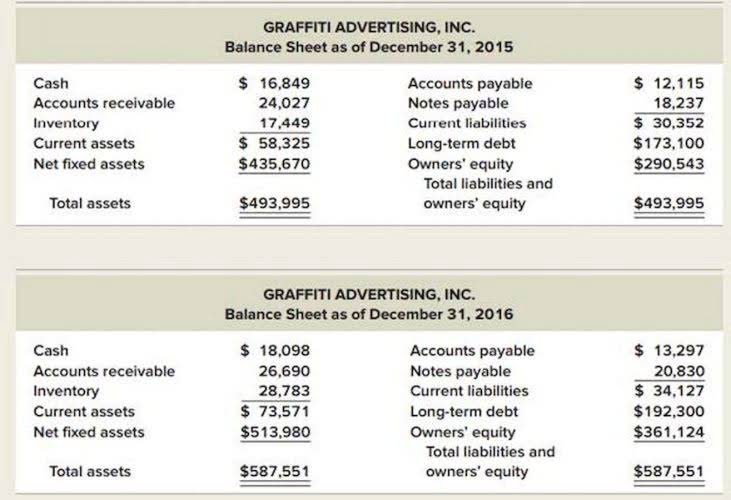
When calculated for corporations, the income after taxes becomes the Net Income After Taxes (NIAT). However, NIAT includes finding the net income after deducting all expenses, including taxes, from gross income. Though the gains are not regular, they form significant part of the income after taxes. In addition, these profits are of high value; hence, they also add to the income of both individuals or entities and the government. Understanding this difference is not just academic – it has practical implications. For example, if your AGI is high, you might be phased out of certain deductions or credits, even if your taxable income is relatively low after deductions.
- Net income after taxes calculation can be shown as both a total dollar amount and a per-share calculation.
- If you cannot notify us of these changes using the HMRC app or personal tax account, you can contact us to change your address and personal details.
- If you use tax software, it calculates it for you once you enter all your income and adjustments.
- Keep in mind that the pre-tax basis is set at a standard percentage per tax bracket, the rates are applied progressively.
- Next, we’ll break down some key tax terminology to further solidify these concepts, and then we’ll look at detailed examples to see how it all comes together on a tax return.
- This means that every employee eligible for pre-tax deductions will reduce taxable income, which in turn lessens their overall tax burden.
After-Tax Income: Overview and Calculations
- Finally, any other relevant deductions are subtracted to arrive at taxable income.
- Founded in 1993, The Motley Fool is a financial services company dedicated to making the world smarter, happier, and richer.
- As a result, revenue is the figure that all costs and expenses are deducted from that ultimately leads to net income, which rests at the bottom of the income statement.
- Your tax filing status (single, married, head of household, etc.) affects your standard deduction and tax brackets.
- The married couple had both adjustments and larger deductions, bringing taxable income way down relative to gross.
- So, AGI is arguably your most important income figure on the tax return.
All content on this website, including dictionary, thesaurus, literature, geography, and other reference data is for informational purposes only. This information should not be considered complete, up to date, and is not intended to be used in place of a visit, consultation, or advice of a legal, medical, or any other professional. You can change your settings at any time, including withdrawing your consent, by using the toggles on the Cookie Policy, or by clicking on the manage consent button at the bottom of the screen. DonateAs a nonprofit, we depend on the generosity of individuals like you. The Tax Cut and Jobs Act’s full expensing provision, allowing the immediate write-off of full business investment costs for certain investments, was in effect until 2022 before phasing out. Although there are plenty of samples to be considered, these five examples are some of the most prevalent ones that most companies have in place for their employees.

Pre-tax deductions vs. payroll deductions

The after-tax income is the disposable income left with the businesses and individuals to be spent and invested in their future requirements. It is the difference between the gross income and the sum of the applicable deductions. Net income after taxes (NIAT) is the net income of a business less all taxes. In other words, NIAT is the sum of all revenues generated from the sale of the company’s products and services minus the costs to run it. Companies and analysts can also use the net-of-tax calculation to determine the value of revenue after the subtraction of taxes.
- Gross income is the total income earned by an individual or a company before any taxes are deducted.
- Staying informed about tax law changes is crucial for effective financial planning.
- Once you have taxable income, you look at the tax brackets for your filing status or use the IRS tax tables to find your tax.
- The difference between the business’s income and the income tax due is the after-tax income.
- Self-employed people are intimately familiar with the taxes they pay and will simply subtract the check they write to the government from their gross income.
- There are deductions that should be accounted for before an employee receives their take-home pay – which means that it’ll help reduce an employee’s taxable income.
Premium Investing Services
This final income amount includes deductions for federal, state, and local taxes, FICA, and any other pre-tax expenses. It is the net income that can be used to pay bills, expenses, savings, investments, or any discretionary spending. Gross income is the total income earned by an individual or a company before any taxes are deducted. It includes all forms of income, such as wages, salaries, bonuses, capital gains, and interest income. After-tax income, on the other hand, is what remains after all applicable taxes have been subtracted from the gross income. Maximizing income through salary negotiations, acquiring additional skills, or side hustles can also increase one’s after-tax income despite the higher taxes paid on the additional income.
- Companies and analysts can also use the net-of-tax calculation to determine the value of revenue after the subtraction of taxes.
- Though the gains are not regular, they form significant part of the income after taxes.
- While the gross income doesn’t give a clear picture of the disposable amount, calculating the after-tax income allows individuals to plan their finances accordingly.
- To understand how this works, read about tax when you get a pension — how your tax is paid.
What is the Significance of State Individual After-Tax Income?
The married couple had both adjustments and larger deductions, bringing taxable income way down relative to gross. The after tax income definition freelancer was able to reduce AGI via business expenses and adjustments, but also got the standard deduction, leaving a much smaller taxable base. Medicare contributions and Social Security payments are calculated on the difference after these deductions are taken from the gross salary amount. However, if the employee makes after-tax contributions to a retirement account, the employer applies taxes to the employee’s gross pay and then subtracts the retirement contributions from that amount. Because taxable income can be reduced to zero by deductions and credits, even when AGI is positive. Understanding the difference between adjusted gross income vs taxable income is crucial for optimizing your taxes and avoiding costly mistakes.

Founded in 1993, The Motley Fool is a financial services company dedicated to making the world smarter, happier, and richer. Regardless of the term used by a company to describe its total revenue earned from sales, revenue is always located at the top of the income statement. As a result, revenue is the figure that all costs and expenses are deducted from that ultimately leads to net income, which rests at the bottom of the income statement. This is why revenue is referred to as the top Airbnb Accounting and Bookkeeping line, while net income is called the bottom line.
What is AGI vs Taxable Income? Avoid this Mistake + FAQs
If you work a full-time job where your taxes are taken out of your paycheck, you may just use normal balance the amount of your paycheck to calculate your after-tax income. However, this approach is a bit less accurate since you may get a tax refund later. Self-employed people are intimately familiar with the taxes they pay and will simply subtract the check they write to the government from their gross income. A surge in a company’s net income after taxes can be due to a lower tax rate or favorable tax treatment.
Telling HMRC about a change in circumstances
Your after-tax income would be $7,500 – ($7500 x 0.25), or $7,500 – $1,875, which is $5,250 in after-tax income. A company with negative net income–or losses–can also be because it’s a start-up firm, which may see years before the company turns a profit. Instead of watching net income, investors monitor revenue growth to determine if the company has the potential to eventually be profitable.
